Abstract
In separate blocks of a simple reaction time (RT) task, eight Parkinsonian and eight control subjects executed finger press sequences with one (index finger), two (index finger-ring) or three (index finger-ring-middle) components. Programming was inferred from the increase latency to initiate the first component as a function of the length of the entire sequence; and from the systematic decrease in inter-response latencies for the second and third components. Overall RT was slower in the Parkinsonians but the programming effects were comparable in the two groups. Intact basal ganglia function appears not to be necessary for programming sequential finger movements, or retrieving subprograms for execution.
Full text
PDF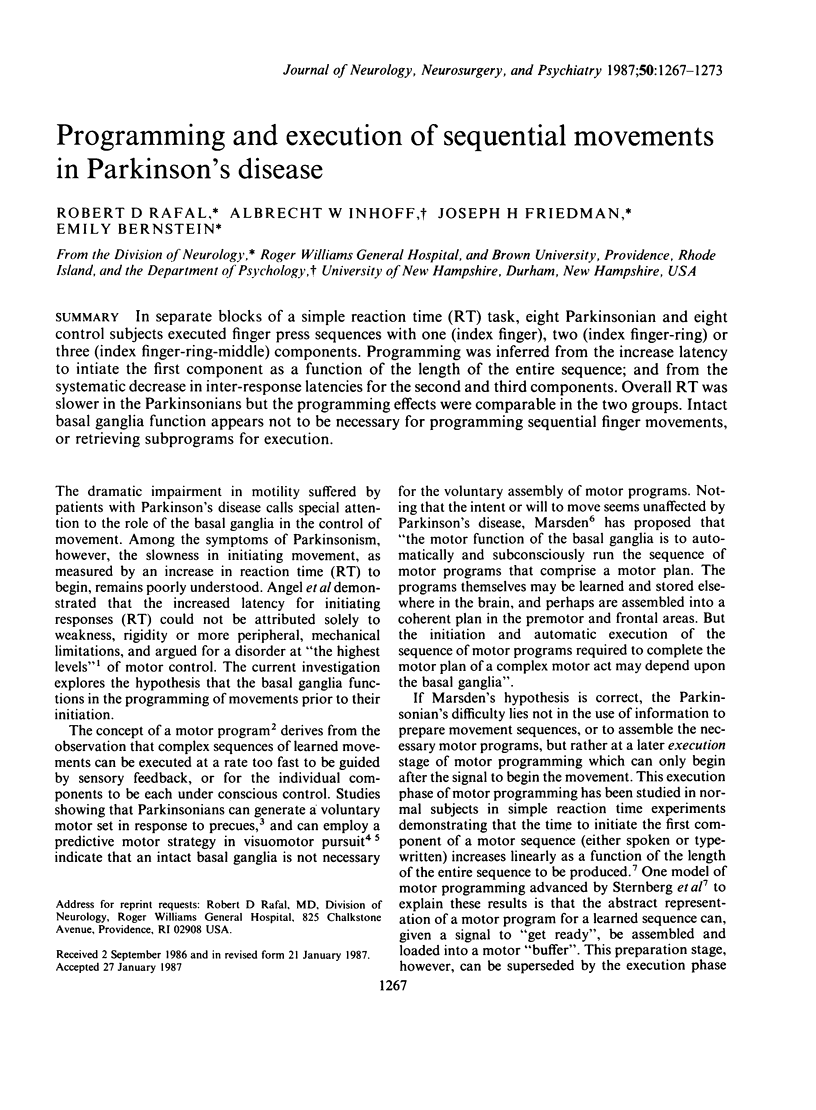
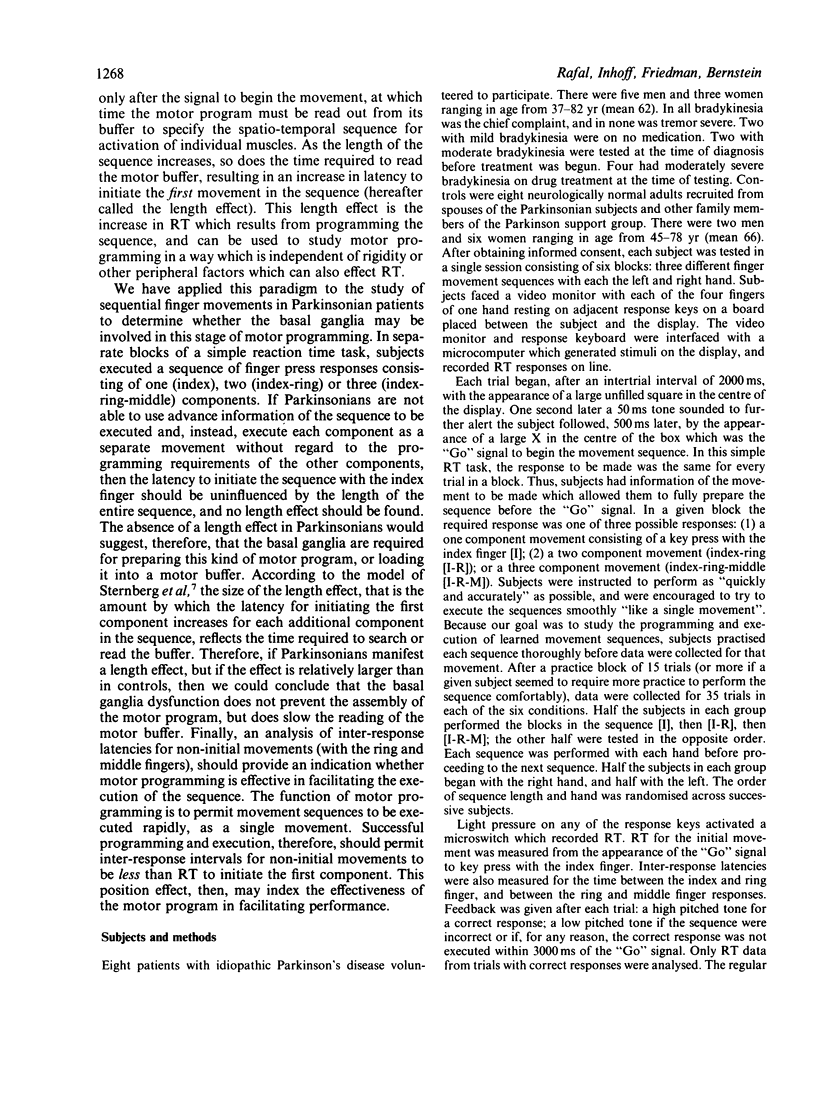

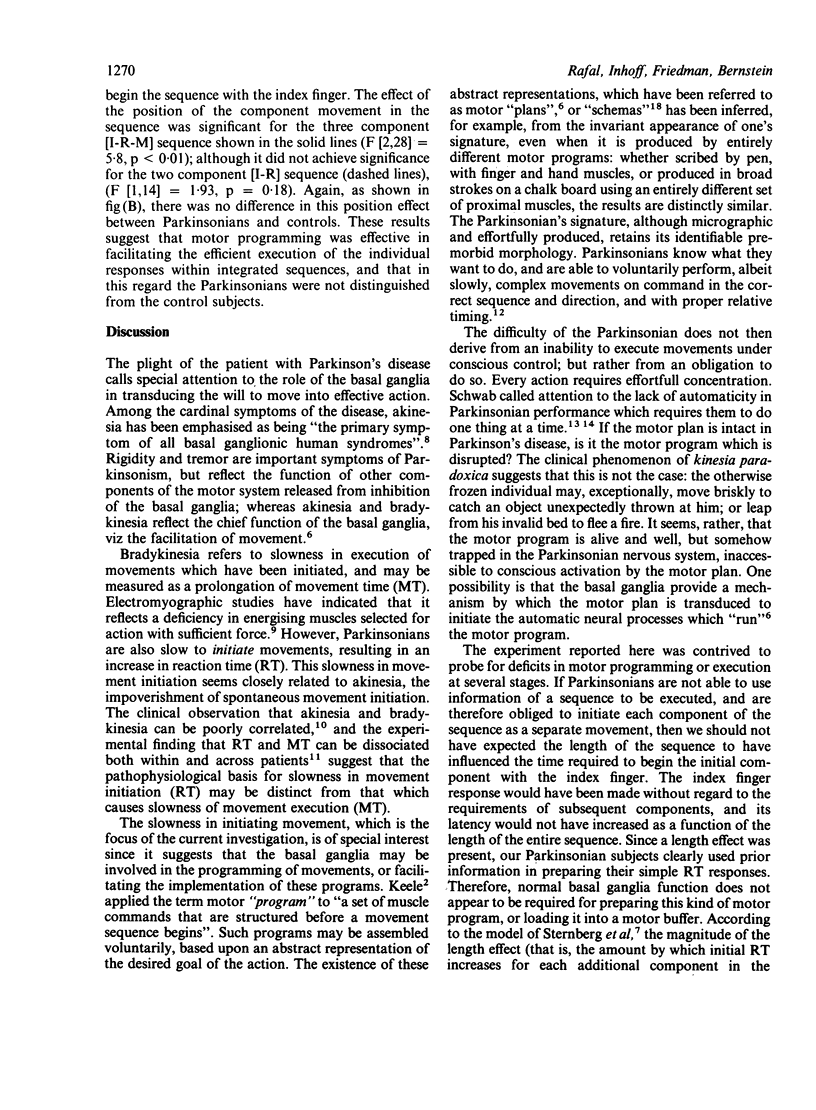
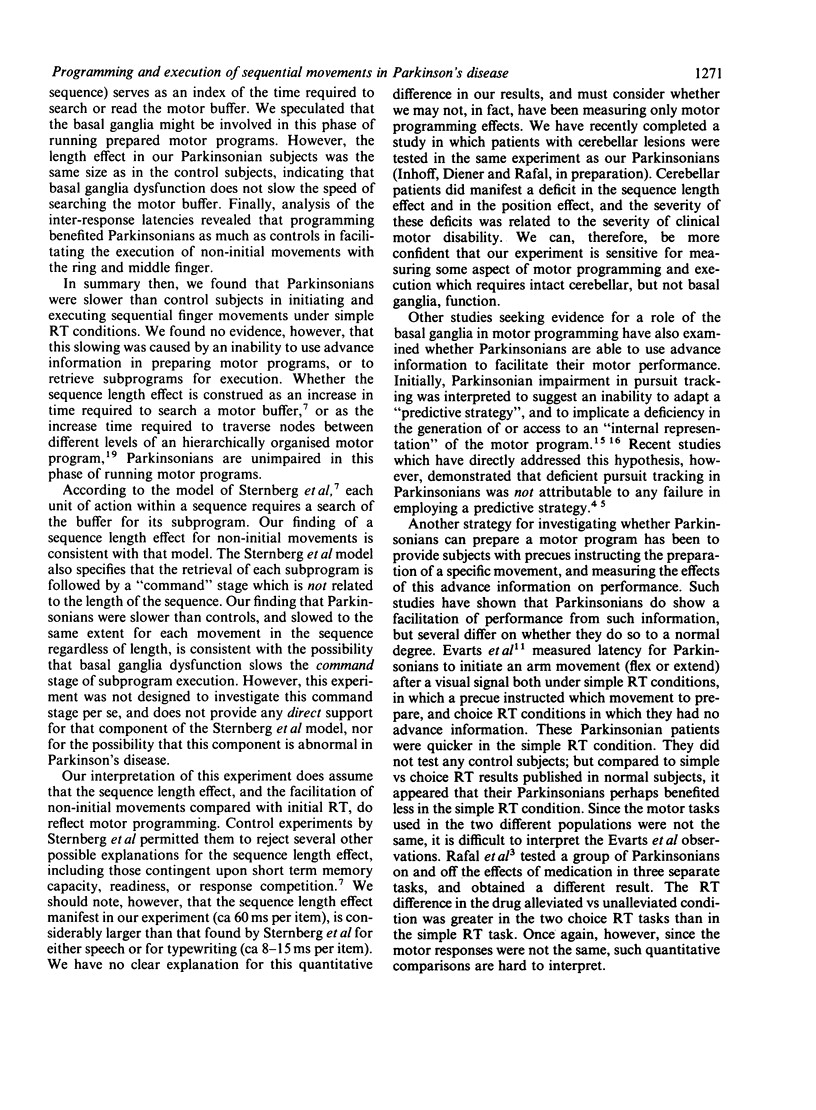
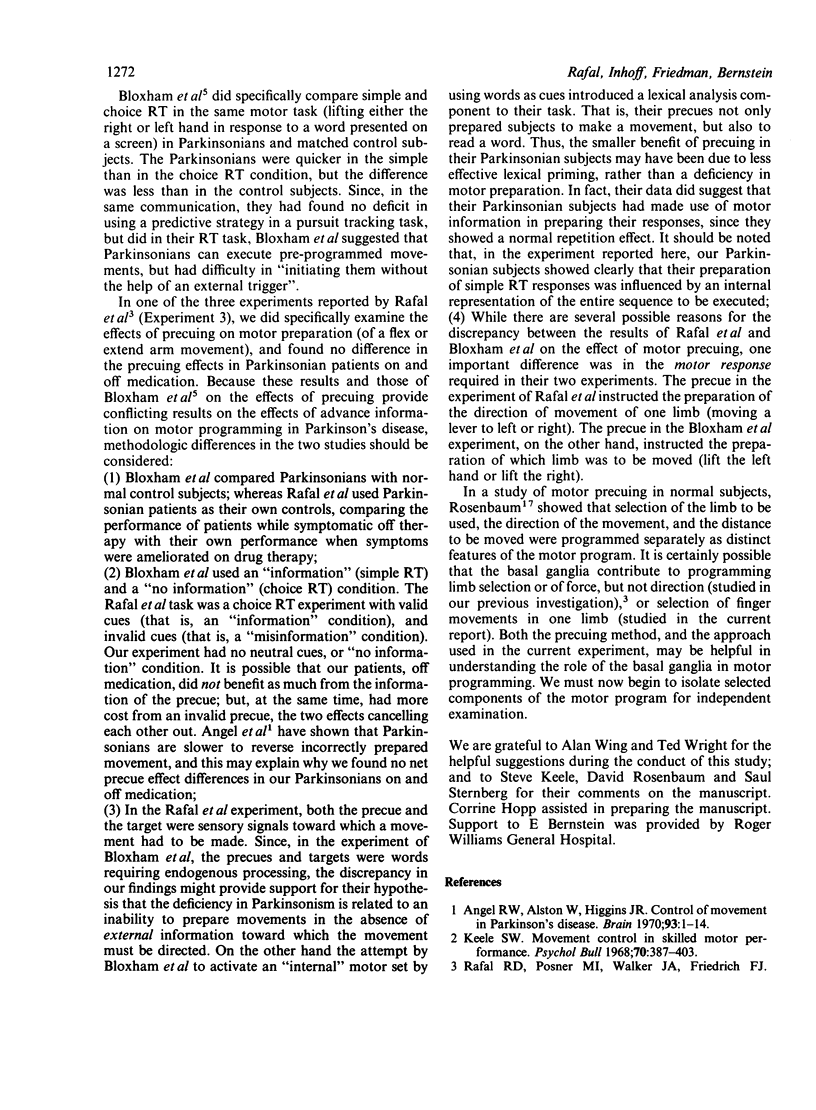

Selected References
These references are in PubMed. This may not be the complete list of references from this article.
- Angel R. W., Alston W., Higgins J. R. Control of movement in Parkinson's disease. Brain. 1970;93(1):1–14. doi: 10.1093/brain/93.1.1. [DOI] [PubMed] [Google Scholar]
- Bloxham C. A., Mindel T. A., Frith C. D. Initiation and execution of predictable and unpredictable movements in Parkinson's disease. Brain. 1984 Jun;107(Pt 2):371–384. doi: 10.1093/brain/107.2.371. [DOI] [PubMed] [Google Scholar]
- Cooke J. D., Brown J. D., Brooks V. B. Increased dependence on visual information for movement control in patients with Parkinson's disease. Can J Neurol Sci. 1978 Nov;5(4):413–415. doi: 10.1017/s0317167100024197. [DOI] [PubMed] [Google Scholar]
- Day B. L., Dick J. P., Marsden C. D. Patients with Parkinson's disease can employ a predictive motor strategy. J Neurol Neurosurg Psychiatry. 1984 Dec;47(12):1299–1306. doi: 10.1136/jnnp.47.12.1299. [DOI] [PMC free article] [PubMed] [Google Scholar]
- Flowers K. Lack of prediction in the motor behaviour of Parkinsonism. Brain. 1978 Mar;101(1):35–52. doi: 10.1093/brain/101.1.35. [DOI] [PubMed] [Google Scholar]
- Hallett M., Khoshbin S. A physiological mechanism of bradykinesia. Brain. 1980 Jun;103(2):301–314. doi: 10.1093/brain/103.2.301. [DOI] [PubMed] [Google Scholar]
- Marsden C. D. The mysterious motor function of the basal ganglia: the Robert Wartenberg Lecture. Neurology. 1982 May;32(5):514–539. doi: 10.1212/wnl.32.5.514. [DOI] [PubMed] [Google Scholar]
- Meyer C. H. Akinesia in Parkinsonism. Relation between spontaneous movement (other than tremor) and voluntary movements made on command. J Neurol Neurosurg Psychiatry. 1982 Jul;45(7):582–585. doi: 10.1136/jnnp.45.7.582. [DOI] [PMC free article] [PubMed] [Google Scholar]
- Rafal R. D., Posner M. I., Walker J. A., Friedrich F. J. Cognition and the basal ganglia. Separating mental and motor components of performance in Parkinson's disease. Brain. 1984 Dec;107(Pt 4):1083–1094. doi: 10.1093/brain/107.4.1083. [DOI] [PubMed] [Google Scholar]
- Rosenbaum D. A. Human movement initiation: specification of arm, direction, and extent. J Exp Psychol Gen. 1980 Dec;109(4):444–474. doi: 10.1037//0096-3445.109.4.444. [DOI] [PubMed] [Google Scholar]
- SCHWAB R. S., CHAFETZ M. E., WALKER S. Control of two simultaneous voluntary motor acts in normals and in parkinsonism. AMA Arch Neurol Psychiatry. 1954 Nov;72(5):591–598. doi: 10.1001/archneurpsyc.1954.02330050061010. [DOI] [PubMed] [Google Scholar]
- SCHWAB R. S., ENGLAND A. C., PETERSON E. Akinesia in Parkinson's disease. Neurology. 1959 Jan;9(1):65–72. doi: 10.1212/wnl.9.1.65. [DOI] [PubMed] [Google Scholar]


